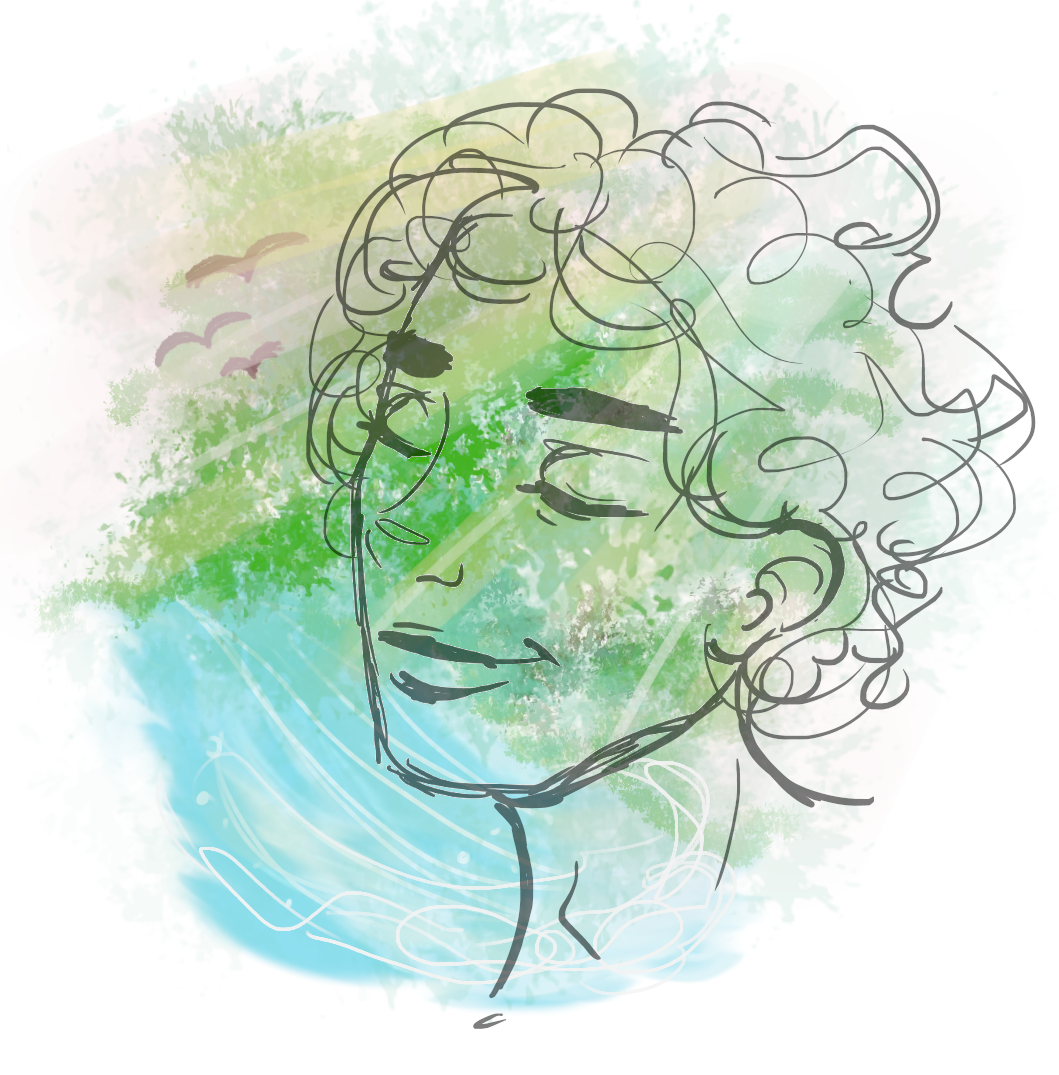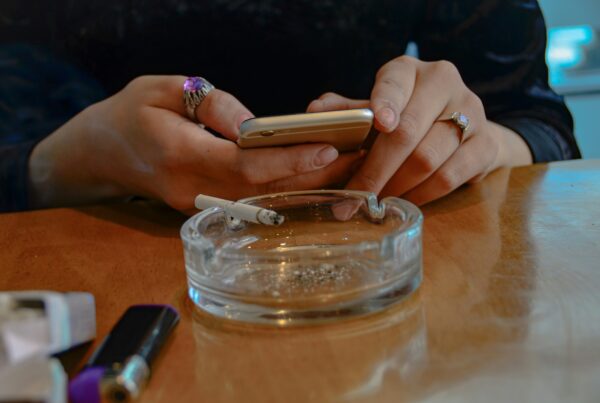
Hearing the songs of the birds and feeling the fresh air against your skin while you enjoy an outburst of green: nature seems to be easily accessible for most of us. Whether you consider nature as a peaceful place to clear your head every day or only every once in a while, most of us can imagine fresh air as a natural remedy for our daily stress. No wonder so many researchers dedicated their efforts to study the effects of nature on mental health. This article will look into three natural elements (sunlight, green environment, and fresh air) that seem to positively affect our mental health and how the pandemic measures may have affected these benefits.
Hearing the songs of the birds and feeling the fresh air against your skin while you enjoy an outburst of green: nature seems to be easily accessible for most of us. Whether you consider nature as a peaceful place to clear your head every day or only every once in a while, most of us can imagine fresh air as a natural remedy for our daily stress. No wonder so many researchers dedicated their efforts to study the effects of nature on mental health. This article will look into three natural elements (sunlight, green environment, and fresh air) that seem to positively affect our mental health and how the pandemic measures may have affected these benefits.

Illustratie: Carolien de Bruin
On a bright morning somewhere in spring, you step out of your house and are immediately greeted with a ray of sunshine. For many of us, it will – literally and figuratively – brighten up our day. But in what matter of way does sunlight affect the mental state?
First of all, there is vitamin D, which our body produces with exposure to direct sunlight. The liver converts vitamin D to 25-hydroxyvitamin-D. People who have a higher 25-hydroxyvitamin-D concentration in their body seem to experience less anxiety and depressive symptoms, and therefore on average a better mental health (Chu et al., 2017).
Secondly, correct exposure to light during the day benefits our biological clock and this can have a positive effect on our mood (Dumont & Beaulieu, 2007). Light plays a crucial role in our circadian rhythm, also known as the sleep-wake rhythm. We humans are diurnal (as opposed to nocturnal) animals and our body uses its biological clock to synchronize activity-related physiological functions with the daytime. At the same time, functions associated with resting are programmed to occur during the night. Incongruence between the circadian clock and sleeping schedule is involved not only in sleep disorders, but also in mood disorders. As light is the main cue used by the biological clock to set its own timing in relation to the day-night cycle, inappropriate light exposure can induce circadian disorders which may result in sleep disorders. That is, light exposure during night time or little light exposure during day time. Therefore, correct light exposure can be used to treat mood disorders. It is therefore advised to expose yourself to light during the day to synchronize your biological clock which in the end helps you sleep well during the night.
Lastly, it is suggested that the amount of sunlight affects serotonergic activity in the brain. As such, these fluctuations in brain serotonin levels may underlay mood seasonality and seasonal mood disorders (Lambert et al., 2002), since the turnover of serotonin by the brain is lowest in winter when compared to the other seasons. Increased luminosity leads to a rise of serotonin production. As a depletion of serotonin (among other chemicals) in the central nervous system is thought to underlie variations in mood and affective disorders, it seems that our affective state can benefit from sunlight.
“When you must choose between a walk through an urban or a more natural environment, you are advised to choose the latter.”
So, you have stepped outside and are enjoying a warm beaming sun. Then where do you go? Will you surround yourself with the big city, restaurants and buildings? Or will you rather prefer a more natural surrounding: trees, grass and flowers? Is a green surrounding more beneficial?
When you must choose between a walk through an urban or a more natural environment, you are advised to choose the latter. A walk through a natural environment has the ability to lower the blood pressure after only 10 minutes (Hartig et al., 2002). To create this effect, even a simple view of trees seems to be sufficient. The urban environment does not show this effect. Moreover, a walk through green surroundings seems to increase positive affect and decrease anger, whereas a walk through an urban environment may have the opposite effect. Thus, it is recommended to choose a walk in nature over a walk through the city.
Finally, you are outside enjoying a bright warm sun and taking up all the gorgeous green that surrounds you. What will be one of the refreshing benefits of being outside? Fresh air! The Dutch even have a verb for this experience: uitwaaien, to go outside for fresh air and let the wind blow through your hair. Besides a fresh feeling and clearing your head, studies suggest that fresh air outside benefits our mental state. One of the key reasons why fresh air is so beneficial, is because it has a high concentration of negative ions as opposed to an unventilated room (Day, 2010). Negative ions are beneficial for the brain. They can reduce symptoms of seasonal affective disorder, fatigue, stress and tension (Day, 2010). Moreover, negative ions regulate the production of serotonin inside the brain promoting strong brain waves that improves mental performance, concentration and alertness. In fresh country air, the normal negative ion count is approximately 4000 negative ions per cubic centimetre. The highest concentrations of negative ions can be found in mountain air and waterfalls which may contain up to 100.000 negative ions per cubic centimetre. Thereupon, sea air and forests are also highly charged with negative ions. This can explain the refreshing and energized feeling a walk on the beach or through the forest induces. On the contrary, indoor places contain high levels of positive ions, especially in places where televisions, computer monitors or other electrical equipment operate. Poorly ventilated places – such as homes, offices and classrooms – may contain as little as 100 negative ions per cubic centimeter (Day, 2010). Negative ions can have a positive effect on our mood state and behaviour whereas positive ions can have a negative effect on human biochemistry. All the reasons to trade your mildly ventilated student flat for some fresh air.
“At times, it might feel like we are risking an epidemic of depressive disorders while we are still coping with the current corona pandemic. ”
These three natural elements give a strong argument to go outside for some fresh air, enjoy the sun and green environment, and let nature do its work. However, all the measures that were taken during the previous months of the pandemic have made going outside more difficult for many people. On the 23th of January this year, the Dutch prime minister announced a curfew to reduce the spreading of the coronavirus. This meant that people were not allowed to go outside after 9 PM unless they had a valid reason. Going for a walk or a run to clear your head after a long day was unfortunately not one of those valid reasons. Needless to say, there are many hours a day during which people can leave their house to enjoy the outside world. However, there is a high possibility that not everyone was free to leave the house during the day, for example because of long working hours or study-related meetings. Therefore the curfew may have limited possibilities to get fresh air for a number of people. Of course these restrictions seem extremely mild compared to the strict lockdown there was in for example Italy during the beginning of the pandemic. Italian citizens were not allowed to leave the house unless it was an urgent matter, such as work, health or buying food. The point is however, that while we are in a health-threatening situation, the options to go outside and enjoy the benefits of nature might be limited even though this is precisely the time when we could use these benefits. At times, it might feel like we are risking an epidemic of depressive disorders while we are still coping with the current corona pandemic.
While enjoying the outside world, direct sunlight, fresh air and green nature can benefit your mood, stress levels and overall feeling of health. Now that the lockdown is being lifted and the situation is slowly but steadily getting better: go outside! Let that wind blow through your hair and let your face be warmed up by the sun. Make enjoying the outside world and green nature a daily habit and appreciate the benefits: mother nature has so much to offer! <<
References
– Chu, F., Ohinmaa, A., Klarenbach, S., Wong, Z. W., & Veugelers, P. (2017). Serum 25-hydroxyvitamin D concentrations and indicators of mental health: an analysis of the Canadian Health Measures Survey. Nutrients, 9(10), 1116.
-Day, L. (2010). Fresh air and sunshine. Early Years Educator, 12(4), 28–30. doi:10.12968/eyed.2010.12.4.49298.
-Dumont, M., & Beaulieu, C. (2007). Light exposure in the natural environment: Relevance to mood and sleep disorders. Sleep Medicine, 8(6), 557–565. doi:10.1016/j.sleep.2006.11.008.
-Hartig, T., Evans, G. W., Jamner, L. D., Davis, D. S., & Gärling, T. (2003). Tracking restoration in natural and urban field settings. Journal of environmental psychology, 23(2), 109-123.
-Lambert, G., Reid, C., Kaye, D., Jennings, G., & Esler, M. (2002). Effect of sunlight and season on serotonin turnover in the brain. The Lancet, 360(9348), 1840–1842. doi:10.1016/s0140-6736(02)11737-5.
On a bright morning somewhere in spring, you step out of your house and are immediately greeted with a ray of sunshine. For many of us, it will – literally and figuratively – brighten up our day. But in what matter of way does sunlight affect the mental state?
First of all, there is vitamin D, which our body produces with exposure to direct sunlight. The liver converts vitamin D to 25-hydroxyvitamin-D. People who have a higher 25-hydroxyvitamin-D concentration in their body seem to experience less anxiety and depressive symptoms, and therefore on average a better mental health (Chu et al., 2017).
Secondly, correct exposure to light during the day benefits our biological clock and this can have a positive effect on our mood (Dumont & Beaulieu, 2007). Light plays a crucial role in our circadian rhythm, also known as the sleep-wake rhythm. We humans are diurnal (as opposed to nocturnal) animals and our body uses its biological clock to synchronize activity-related physiological functions with the daytime. At the same time, functions associated with resting are programmed to occur during the night. Incongruence between the circadian clock and sleeping schedule is involved not only in sleep disorders, but also in mood disorders. As light is the main cue used by the biological clock to set its own timing in relation to the day-night cycle, inappropriate light exposure can induce circadian disorders which may result in sleep disorders. That is, light exposure during night time or little light exposure during day time. Therefore, correct light exposure can be used to treat mood disorders. It is therefore advised to expose yourself to light during the day to synchronize your biological clock which in the end helps you sleep well during the night.
Lastly, it is suggested that the amount of sunlight affects serotonergic activity in the brain. As such, these fluctuations in brain serotonin levels may underlay mood seasonality and seasonal mood disorders (Lambert et al., 2002), since the turnover of serotonin by the brain is lowest in winter when compared to the other seasons. Increased luminosity leads to a rise of serotonin production. As a depletion of serotonin (among other chemicals) in the central nervous system is thought to underlie variations in mood and affective disorders, it seems that our affective state can benefit from sunlight.
“When you must choose between a walk through an urban or a more natural environment, you are advised to choose the latter.”
So, you have stepped outside and are enjoying a warm beaming sun. Then where do you go? Will you surround yourself with the big city, restaurants and buildings? Or will you rather prefer a more natural surrounding: trees, grass and flowers? Is a green surrounding more beneficial?
When you must choose between a walk through an urban or a more natural environment, you are advised to choose the latter. A walk through a natural environment has the ability to lower the blood pressure after only 10 minutes (Hartig et al., 2002). To create this effect, even a simple view of trees seems to be sufficient. The urban environment does not show this effect. Moreover, a walk through green surroundings seems to increase positive affect and decrease anger, whereas a walk through an urban environment may have the opposite effect. Thus, it is recommended to choose a walk in nature over a walk through the city.
Finally, you are outside enjoying a bright warm sun and taking up all the gorgeous green that surrounds you. What will be one of the refreshing benefits of being outside? Fresh air! The Dutch even have a verb for this experience: uitwaaien, to go outside for fresh air and let the wind blow through your hair. Besides a fresh feeling and clearing your head, studies suggest that fresh air outside benefits our mental state. One of the key reasons why fresh air is so beneficial, is because it has a high concentration of negative ions as opposed to an unventilated room (Day, 2010). Negative ions are beneficial for the brain. They can reduce symptoms of seasonal affective disorder, fatigue, stress and tension (Day, 2010). Moreover, negative ions regulate the production of serotonin inside the brain promoting strong brain waves that improves mental performance, concentration and alertness. In fresh country air, the normal negative ion count is approximately 4000 negative ions per cubic centimetre. The highest concentrations of negative ions can be found in mountain air and waterfalls which may contain up to 100.000 negative ions per cubic centimetre. Thereupon, sea air and forests are also highly charged with negative ions. This can explain the refreshing and energized feeling a walk on the beach or through the forest induces. On the contrary, indoor places contain high levels of positive ions, especially in places where televisions, computer monitors or other electrical equipment operate. Poorly ventilated places – such as homes, offices and classrooms – may contain as little as 100 negative ions per cubic centimeter (Day, 2010). Negative ions can have a positive effect on our mood state and behaviour whereas positive ions can have a negative effect on human biochemistry. All the reasons to trade your mildly ventilated student flat for some fresh air.
“At times, it might feel like we are risking an epidemic of depressive disorders while we are still coping with the current corona pandemic. ”
These three natural elements give a strong argument to go outside for some fresh air, enjoy the sun and green environment, and let nature do its work. However, all the measures that were taken during the previous months of the pandemic have made going outside more difficult for many people. On the 23th of January this year, the Dutch prime minister announced a curfew to reduce the spreading of the coronavirus. This meant that people were not allowed to go outside after 9 PM unless they had a valid reason. Going for a walk or a run to clear your head after a long day was unfortunately not one of those valid reasons. Needless to say, there are many hours a day during which people can leave their house to enjoy the outside world. However, there is a high possibility that not everyone was free to leave the house during the day, for example because of long working hours or study-related meetings. Therefore the curfew may have limited possibilities to get fresh air for a number of people. Of course these restrictions seem extremely mild compared to the strict lockdown there was in for example Italy during the beginning of the pandemic. Italian citizens were not allowed to leave the house unless it was an urgent matter, such as work, health or buying food. The point is however, that while we are in a health-threatening situation, the options to go outside and enjoy the benefits of nature might be limited even though this is precisely the time when we could use these benefits. At times, it might feel like we are risking an epidemic of depressive disorders while we are still coping with the current corona pandemic.
While enjoying the outside world, direct sunlight, fresh air and green nature can benefit your mood, stress levels and overall feeling of health. Now that the lockdown is being lifted and the situation is slowly but steadily getting better: go outside! Let that wind blow through your hair and let your face be warmed up by the sun. Make enjoying the outside world and green nature a daily habit and appreciate the benefits: mother nature has so much to offer! <<



